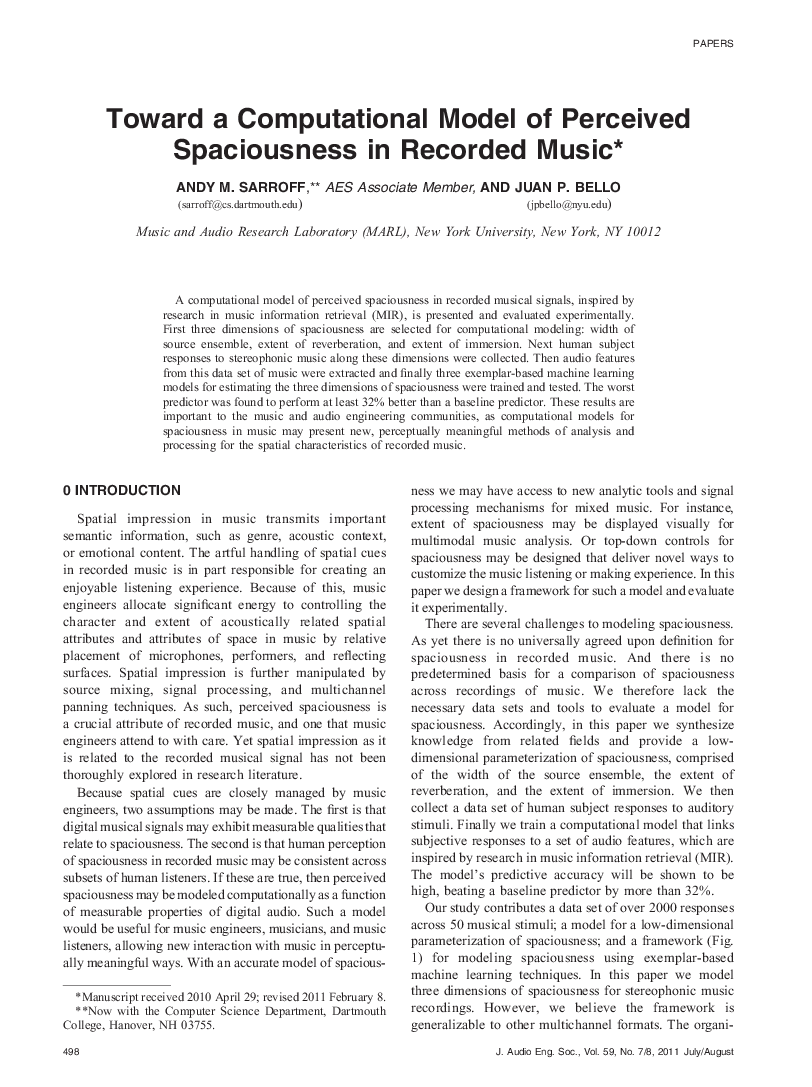Home / Publications / E-library page
You are currently logged in as an
Institutional Subscriber.
If you would like to logout,
please click on the button below.
Home / Publications / E-library page
Only AES members and Institutional Journal Subscribers can download
A validated computational model of perceived spaciousness in sound recordings serves to represent the subjective experience of listeners. Three dimensions of spaciousness form the basis of the model: width of source ensemble, extent of reverberation, and extent of immersion. The model is trained and tested to learn the audio parameters that contribute to these three dimensions. The resulting model predicted spaciousness 32% above that of a baseline predictor. The model can be used to show an audio engineer the value of the three dimensions in real time.
Author (s): Sarroff, Andy M.; Bello, Juan P.
Affiliation:
Music and Audio Research Laboratory (MARL), New York University, New York, NY
(See document for exact affiliation information.)
Publication Date:
2011-07-06
Import into BibTeX
Permalink: https://aes2.org/publications/elibrary-page/?id=15975
(617KB)
Click to purchase paper as a non-member or login as an AES member. If your company or school subscribes to the E-Library then switch to the institutional version. If you are not an AES member Join the AES. If you need to check your member status, login to the Member Portal.

Sarroff, Andy M.; Bello, Juan P.; 2011; Toward a Computational Model of Perceived Spaciousness in Recorded Music [PDF]; Music and Audio Research Laboratory (MARL), New York University, New York, NY; Paper ; Available from: https://aes2.org/publications/elibrary-page/?id=15975
Sarroff, Andy M.; Bello, Juan P.; Toward a Computational Model of Perceived Spaciousness in Recorded Music [PDF]; Music and Audio Research Laboratory (MARL), New York University, New York, NY; Paper ; 2011 Available: https://aes2.org/publications/elibrary-page/?id=15975